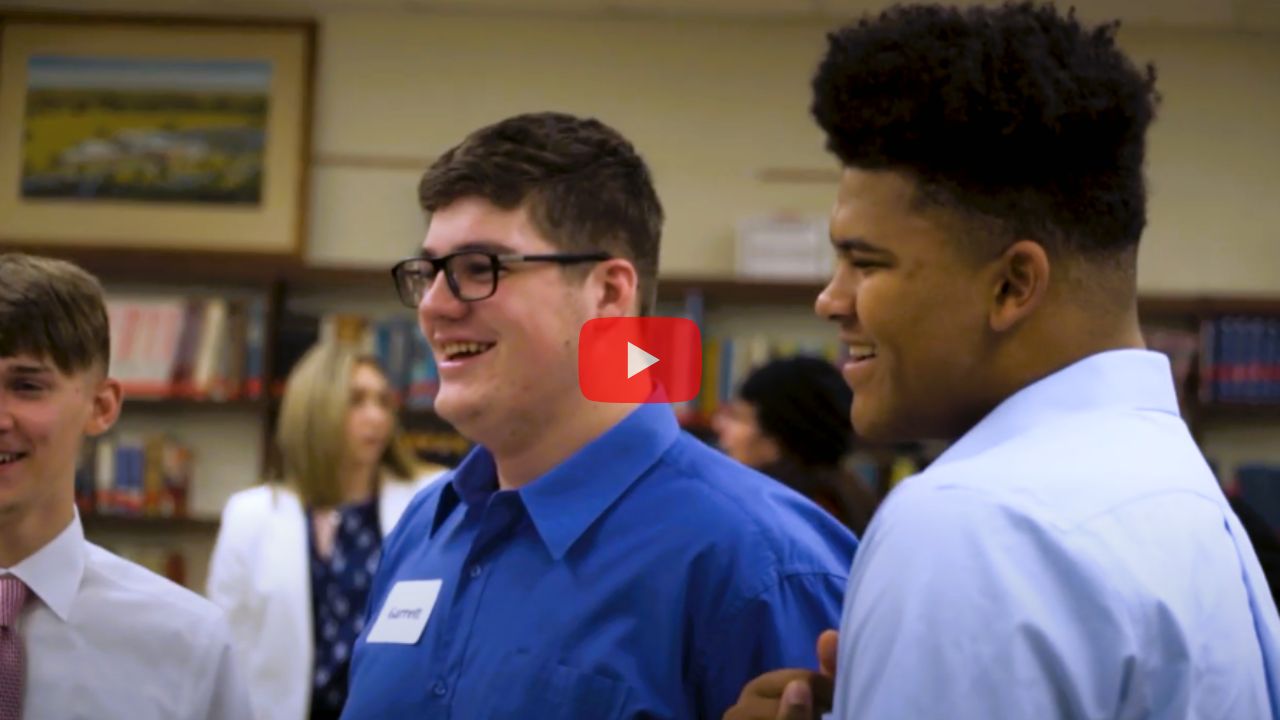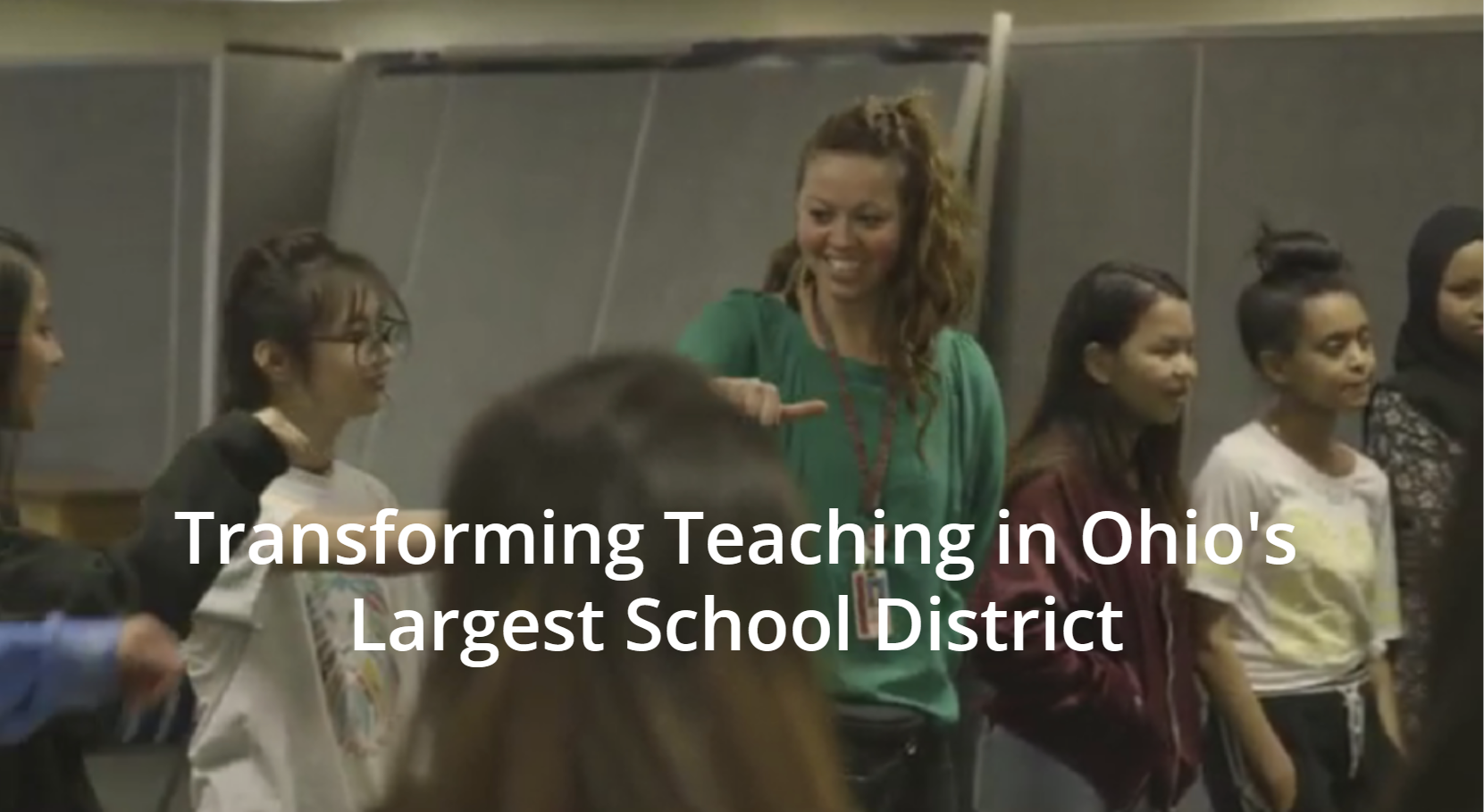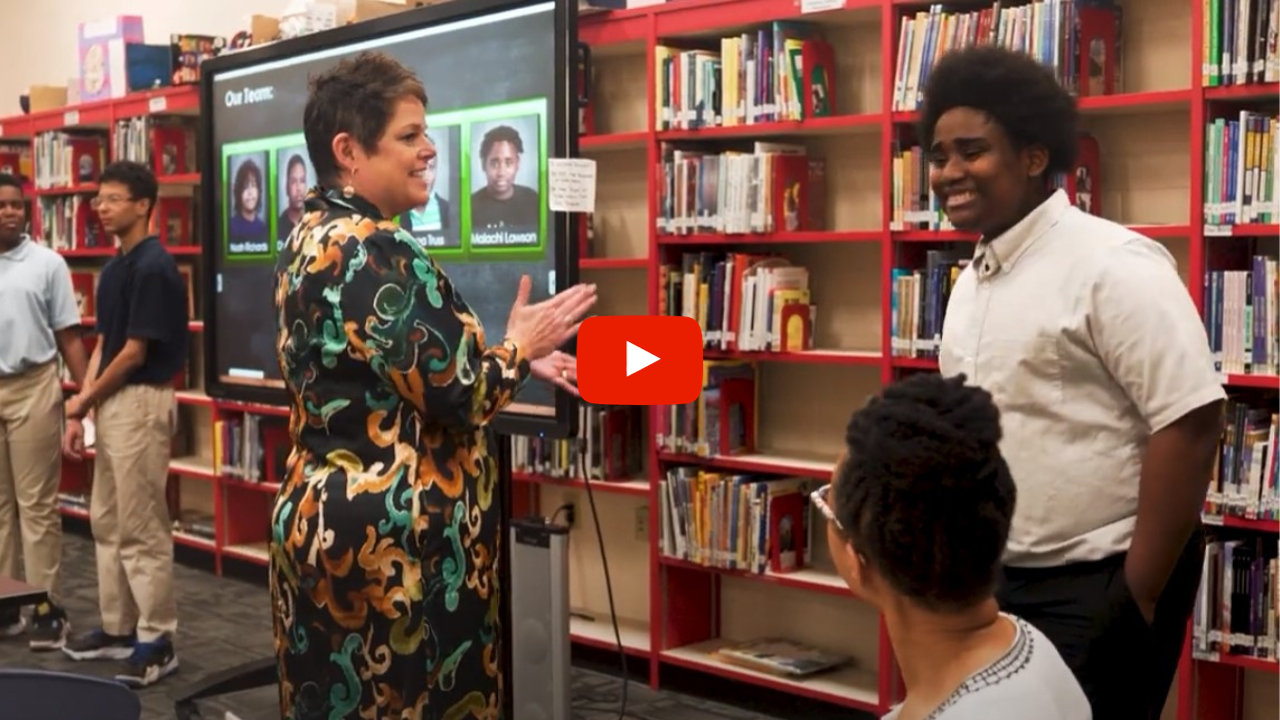In this episode, Doris describes the Hawken Entrepreneurial Studies class from the student perspective. She explains how this style of “learning by doing” is different than traditional school and how collaboration plays a critical role in students’ growth.
Alison: So take me through a challenge and what the students are actually doing day to day, at night, assignments, those sorts of things.
Doris: Okay. Is it okay if I pick a specific one?
Alison: Yeah. That’s good.
Doris: So one of the semesters, our first business was an Indian fast casual restaurant here in Cleveland named Choolaah. They were opening the restaurant for the first time in a few months and the challenge for the students was develop a how to win Cleveland and then the rest of the world plan for Choolaah.
Choolaah is a wonderful, wonderful restaurant with a very unique concept where they both serve delicious, amazing food but also really want to mainstream Indian food and culture in the American market. That was the first challenge.
The students walk into the first day of class and they know this is going to be a strange class but they have no idea what to expect. In the first couple of days, we take them through some experiences where they learn some things by doing. For example, some Design Thinking challenges.
We have them do their first . . . they’re going to be presenting a lot in the class. They’re going to be using the Business Model Canvas a lot in the class. So we have an exercise in the first couple days where they present a business of their choosing that they either really know well or really like in a three to four-minute presentation to the rest of the class using the Business Model Canvas.
So we don’t lecture them on the business model canvas. We give them something to read at night that describes the Business Model Canvas. We tell them there are almost endless numbers of YouTube videos of people presenting businesses using the Business Model Canvas. So go to town, do what you need to do. Tomorrow, you’re going to be presenting your business using the Business Model Canvas and we give them some instructions about that.
In the first two days, they are getting thrown in to presenting to everybody. We, in the first couple of days, say things like, “You can’t get an A by yourself,” which they’ll come to understand over time. One of the lines I have is, “If your feelings get hurt easily, get over it.” We talk about what the kind of feedback is, what the importance is of the feedback they’re going to get, etc.
So they’re thrown immediately into what turns out to be very uncomfortable space. Instead of coming into a class, sitting at a desk, knowing for the first few days you can sit there and have the teacher. They’re having to perform in front of their peers and teachers the minute they walk in the door . . .
Alison: Right out the gate.
Doris: Right out the gate. And they don’t have a textbook for this business model presentation. So they’re also learning right out the gate what it means to have a deadline and an assignment and no instructions or recipe or textbook. But having to do their own research and figure out, “Okay, what are the most important questions I have that I better figure out between now and then and how do we do this?”
Coming in and presenting things and doing things that you know you’re not really equipped to do well. You’re just not. We tell them, “You’re going to be pretty miserable at this. You have no experience with the Business Model Canvas. You don’t really have a lot of experience with business. That’s okay. You’ll learn.” We expect that.
So it’s really a kind of crazy couple of days. In fact, we have the students blog. Their first blog is about the first couple of days. We have some kids that are really shaken up and they’re really off. There are a lot of other things in terms of the experiences we’ve put them through and what we have them do, but basically, the third day of class or fourth at the latest, depending on the schedule, they’re taken to their first business problem.
People are often asking, “What do you do to prepare them? What do you do to prepare them to work on a real business problem?” And the answer is nothing. And the learning comes from having to . . .
Alison: Solve it.
Doris: With the deadline. If we were to prepare them for it, that’s what school looks like.
Alison: Right. Standing up in front of the room, saying, “Here’s what to expect. Here’s what you need to do. Here’s the recipe. Here are the answers in the back of the book. Go.”
Doris: Yeah. In this particular class, they learn a lot about a business as a byproduct of all this, but whatever it is, whether it’s an entrepreneurship class, a history class, a math class, whatever it is, this isn’t intended to be an MBA squeezed into a semester.
Alison: Good point.
Doris: You have certain learning objectives. There are skills and they’re huge and there’s also knowledge they have to learn. You figure out how they’re going to get those. Depending on the class, both may be different. Although, I’d argue most of the skills we’re talking about are those core foundational necessary skills, problem solving, etc. So that’s the first couple of days.
Then they’re thrown in the business on the third day. Here’s what’s happening. In the first few weeks of the class, because this is all new to students, they’re getting assigned a lot. The reason they’re getting assigned a lot is they have to, in order to be able to come up with anything substantive, they have to learn some very basic things about market research, about customer development, about how to interview well, about some basic foundational things for problem solving. They have to learn some very basic things about teamwork and collaborating well.
We have them . . . there’s a bit of a writing boot camp. They’re going to be writing a lot, not only writing things that just the teacher reads, but they’re going to be writing things that are blogs that anybody can read. They’re going to be emailing CEOs. They’re going to be emailing strangers hoping to get a response. So they have a lot to learn very, very quickly. So there’s that stuff. They’re getting tons of assignments early on.
In the meantime, their team in particular, they’re assigning themselves their own work. So there’s also stuff every night that the team . . .
Alison: Depending on where they are in the problem solving.
Doris: They have to learn.
Alison: It’s team-specific.
Doris: That’s right. In the case of Choolaah, they have to learn a lot about the demographics in Cleveland. They have to learn about the fast casual industry. They have to learn about, actually, in the case of Choolaah, they had quite a bit of learning to do about Indian culture and Indian food. They had to learn about what the landscape for not only Indian food but ethnic food looks like across the United States. They had to learn some economic stuff because Choolaah has a certain average price point per meal. All kinds of stuff.
They’re learning about customer development. They’re watching Steve Blank’s Udacity videos so, they’re every night doing one or two sections to learn . . .
Alison: The foundation of . . .
Doris: The foundation of Lean Startup. They’re learning how to interview well and we’re putting them through workshops to have them learn that because it’s not . . .
Alison: And they do that during the day?
Doris: Yeah. They do that during class. But as a teacher, it’s a very tricky thing. Whether you have bigger blocks of time like we have now or you’re teaching it in a three-week after school program or you’re teaching it as an elective and it’s one of six classes over the course of a semester, it’s really tricky because you have to think about what is the most important for them to do during the class time versus what they can do outside of class on their own.
We’re actually fairly religious about a few things. For example, at Hawken, we are very fortunate. We have an amazing alum base and parent base and a lot of very successful people. I am very happy to report it’s been a crazy-supportive, wonderful school and community and very often people will offer to come, very successful important people with lots to teach, will offer to come and talk to the students.
I have a policy and I say, “I’m so grateful you’re supportive and I’d love to have you on call when we need you, but we don’t have anyone come in and talk to the students because they can watch Bill Gates at night.” What they can’t do at night is work with each other. So what you really get very careful about is what these students are doing in class. One of the things also that a student experiences is that when they come into class, they learn the importance of using that time well. They initiate it.
The other thing I haven’t mentioned that is a very important part of the class is the way we start class every day. We start class every day with something we call news circle. On the very first day of class, I say “Students, find a news source, it doesn’t matter what it is, that you’ll follow every day, a daily, changing news source. So if you’re really into music, it can be a music blog, whatever.”
On any given morning on news circle, I say, “Alison, what’s new?” And I’d like to hear not what was new a week ago but what was new the night before. I’ll say, “Why is that interesting?” And Alison will say why that’s interesting. At the beginning of the class, students stand in news circle and are reluctant to talk and you saw this happen. But over time, as students listen to each other, as I listened to Alison bring up something that she found interesting from her music blog, even though I’m not interested personally in music and there’s a conversation that happens.
Increasingly, the work we’re doing for Choolaah and the things that we’re learning and coming and across start coming into the news circle. There are connections that the students are making between external systems and the problem that they’re working on, their world, the world outside.
What happens is increasingly the students are dying to bring up their news and talk about why it’s interesting. They feed off each other. Before you know it, someone’s bringing up a news story and it goes around without the teacher saying anything. By the time they’re done with what started as a music story, it’s a story about the politics surrounding the immigrants. You just have no idea.
One of the things many of our students say and it happens in those first few weeks is that they start to become . . . it becomes habit forming to stay on top of what’s happening in the world and care and be interested and converse about it.
Alison: Sure. Therefore, it sounds like the way you do setup class is quite intentional. You’re not just throwing a problem in the room. You set out some time in the beginning of class for the news circle, which also acts as a check in for where they’re at with the problem and then they’re released to go into their team time. They go and do their own work.
Doris: It depends on what you’re doing and where they are. We have very different things. But definitely, you have to make a lot of room, what we call team time, for them to work in teams. But it’s a challenge as a teacher. You have this much time, whatever it is. You have to balance, “We need to do a workshop so that they learn how to interview well,” with, “They need to have time to work as a team.”
There’s a learning management system that Tim developed that is totally in Google. They have to learn how to navigate outside of class and in class with a variety of resources.
Alison: Having a virtual workplace.
Doris: Yeah.
Alison: Utilizing tools like that to really create together whether they’re in or out of class.
Doris: Right. They learn how to manage projects. They use to-do lists to keep track of their group, their team to-do list and who’s assigned what and deadlines and completion.
Alison: Which we can see it’s a kind of overview of where they’re at in the process.
Doris: Right.
Alison: What they might need help with.
Doris: We assign subject matter-related videos and articles, although that’s a whole different topic in terms of what you assign and how you decide that and when because you really want them to be chasing the research. But there’s also different stages in the problem where they need to be at a certain place and the assignments reflect that.
So if you have, in our case with the current course, we’re talking about three-week units for each business. But if you have a five week unit, there is a certain time when they need to have gotten to a certain place. And so how you guide them through that is pretty developed.







